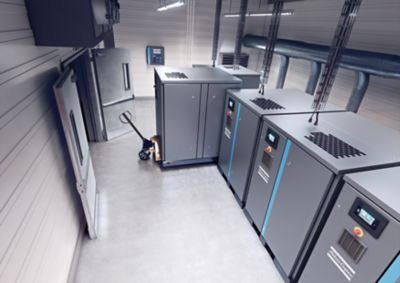Wastewater treatment trends for a more efficient plant
Reading time: 2.5 minutes
Efficiency is the name of the game for modern wastewater treatment plants. Unfortunately, many facilities were built decades ago and are becoming increasingly expensive to operate. Therefore, you may be looking for a way to upgrade your wastewater treatment plant to meet the latest standards. Switching to newer technologies, such as bubble aeration, could help you lower your operating costs.
The importance of an efficient aeration system
Let’s briefly look at why efficiency is so much more important now. On the one hand, it just makes good business sense to consume as little power as possible and keep costs low. This is especially true in times of high energy prices and supply insecurities. On the other hand, governments increasingly demand efficiency and that all businesses do their part to help reduce carbon emissions.
However, efficiency can never come at the expense of reliability. Aeration is simply too important for wastewater facilities.
The difference between surface aeration and bubble aeration
As noted above, many wastewater treatment plants were built in the last century. That means they are due for an upgrade. In some cases, this modernization may not require a large investment. In others, a larger upfront expenditure may be needed to meet today’s efficiency standards. Back in the 1970s, 80s, and 90s, energy was seemingly endlessly available at a low cost. That is why many wastewater treatment plants use a mechanical aeration system. It was a cost-effective solution back then but not an efficient one: the transfer of oxygen into the water is very limited.
With the cost of energy soaring, more and more wastewater treatment operators have turned to another technology: (fine) bubble aeration. Because of the direct injection of air/oxygen into the water tank, it’s a much more cost-efficient manner of getting the air where it is needed.
Setting up a fine bubble aeration system requires quite the investment but choosing a system that works with dissolved oxygen will pay back in the long run. Opting for an energy-efficient blower installation will help you reduce operating costs even further.
Wastewater treatment plants 4.0
Another great way of lowering operating costs is to embrace all of the benefits that Industry 4.0 has to offer.
With more and more measurements and parameters included in the control, operation and even the modeling of the wastewater plant, it makes sense to take full advantage of the interconnectivity of different sources and systems.
The higher the data quality, the better you’ll be able to make decisions on how to operate the plant. For example, upstream sensors can help determine the aeration needs of a plant. Many systems already take into account the time of day, expected rainfall, etc. Having this kind of data available, might seems like a no-brainer to you.
But even your compressed air system can help you get the job done more efficiently. There are many remote monitoring and control technologies available today, both on an individual unit level and for your complete installation. All of these technologies can be connected to your SCADA system, simplifying the decision-making process and optimizing operation.
Taking advantage of biogas production and heat recovery
Whether you’re using the produced biogas on-site or feeding it into the system, here, too, compressed air plays a role. Biogas blowers and compressors are efficient solutions to remove any unwanted gasses and compress them for re-injection into the grid.
But even the most efficient compressed air equipment uses energy and, in the process, generates heat. With an energy recovery unit, the warmth/heat produced can be used elsewhere, e.g., to heat buildings. After all, an efficient wastewater operation does not let anything go to waste.

